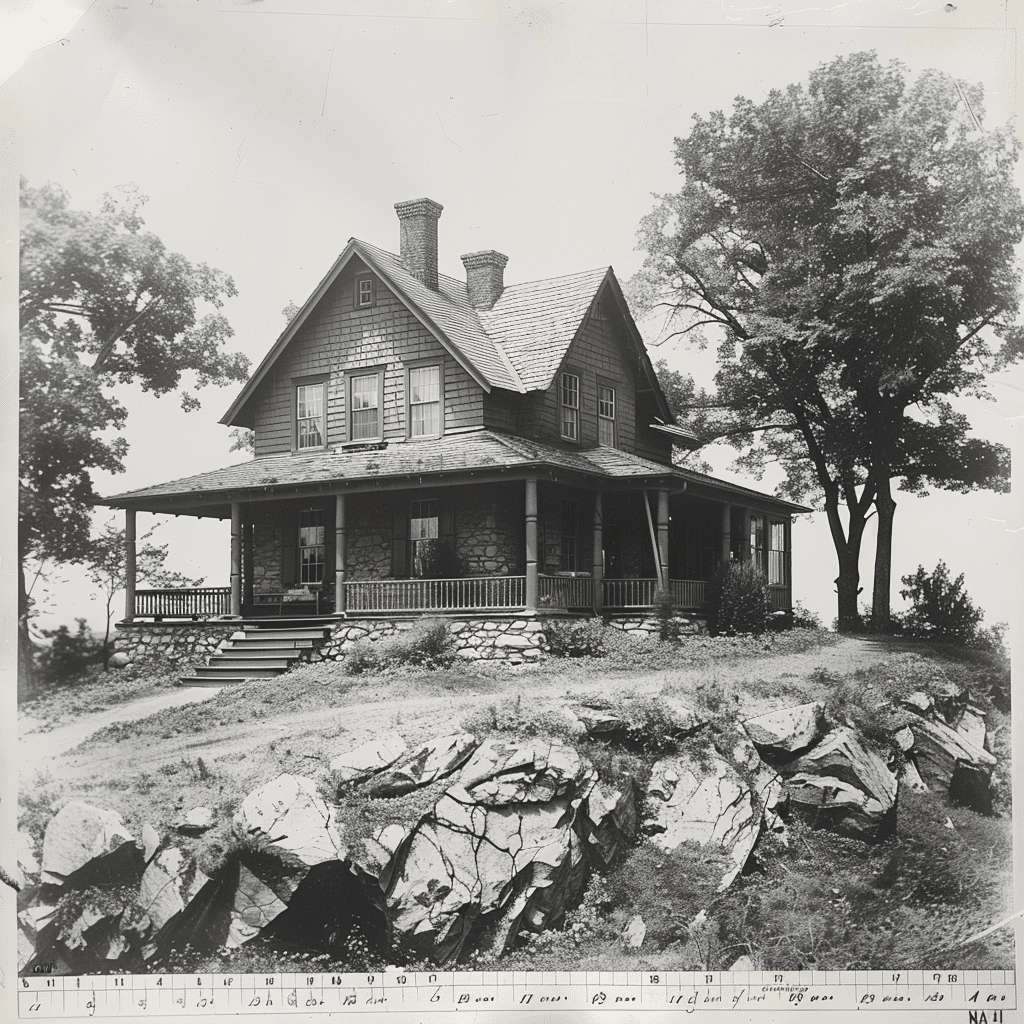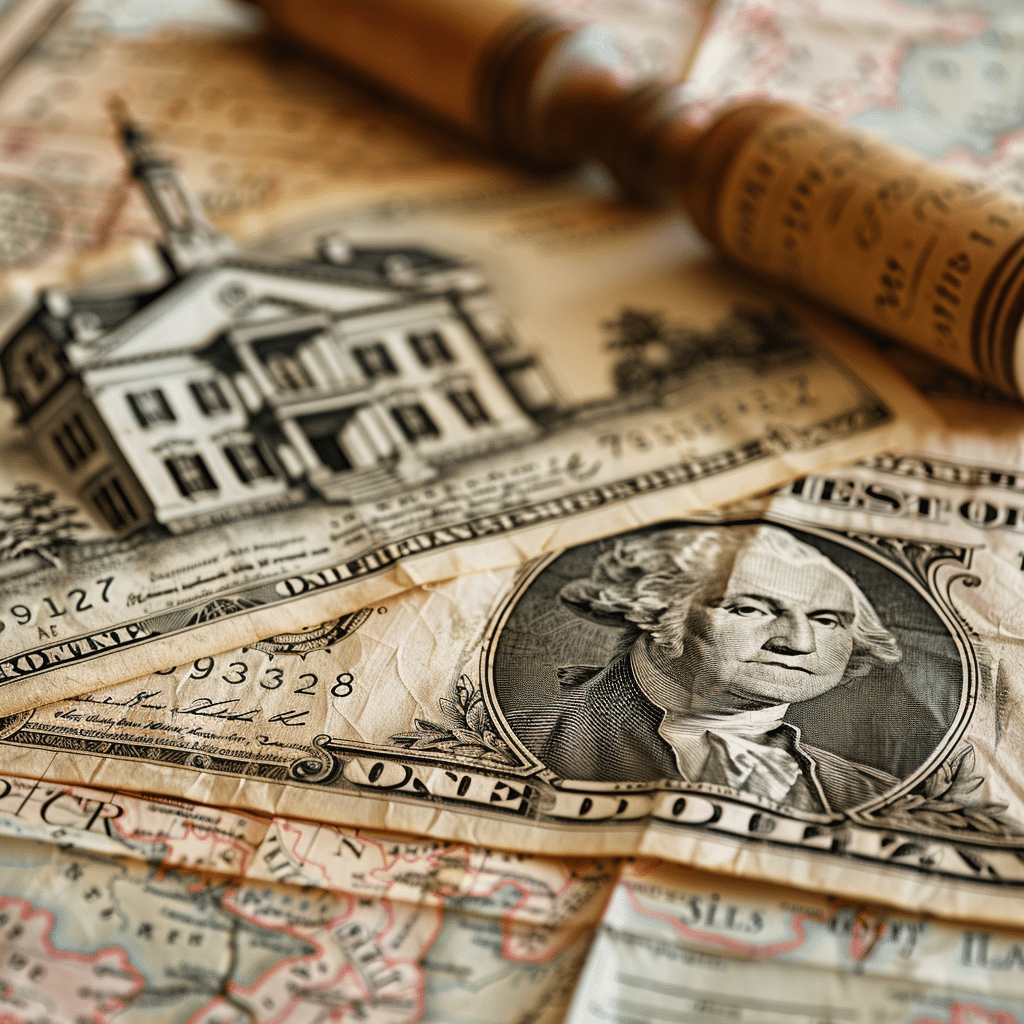As we steer through the financial waves, understanding the trends and patterns of mortgage rates is akin to having a compass in the vast ocean of home financing. The historical mortgage rates chart isn’t just a series of numbers on a timeline; it’s a narrative of economic resilience, technological advancements, and adaptive strategies for future investments. In this article, we will embark on a journey from the past century’s financial shifts to our current landscape in 2024, unraveling how history informs today’s mortgage rates and tomorrow’s financial decisions.

Decoding the Historical Mortgage Rates Chart

The Evolution of Mortgage Rates: A Century of Lending
Dating back to the early 20th century, mortgage rates have mirrored the heartbeat of the nation’s economy. Significant dips and surges have often been the shadows of monumental historical events. For example, the Great Depression tightened its grip on the country, leading to dramatically low mortgage rates, as the government sought ways to stimulate the economy. Afterward, the post-World War II era lit the fuse on a housing boom, altering demand and, subsequently, mortgage rates.
Flash forward to the 1970s, where stagflation pushed rates to new heights, then to the Great Recession of 2008, an era that saw rates plummet as a result of aggressive federal intervention. Most recently, the COVID-19 pandemic of 2020 threw the economy into another loop, with the Federal Reserve slashing rates to historic lows to keep the housing market afloat. Each policy change, each shift in the socio-economic wind, has etched its mark on the mortgage rates historical landscape.
| Year | 30-Year Fixed Average (%) | 15-Year Fixed Average (%) | 5/1 ARM Average (%) | Historical Events Influencing Rates |
| 1980 | 13.74 | N/A | N/A | Recession, high inflation |
| 1985 | 12.43 | N/A | N/A | Economic recovery |
| 1990 | 10.13 | N/A | N/A | Gulf War, mild recession |
| 1995 | 7.93 | 7.15 | N/A | Economic growth |
| 2000 | 8.05 | 7.72 | 7.75 | Dot-com bubble |
| 2005 | 5.87 | 5.42 | 5.31 | Housing boom |
| 2010 | 4.69 | 4.10 | 3.82 | Great Recession recovery |
| 2015 | 3.85 | 3.09 | 2.99 | Post-recession economic growth |
| 2020 | 3.11 | 2.61 | 2.96 | COVID-19 pandemic, Fed rate cuts |
Analyzing Decadal Shifts: Mortgage Data from 1950s to 2024
Cracking the code of the rate changes over the decades, we see a clear wave pattern emerge in the historical mortgage rates chart. The sky-high rates of the 1980s with average annual rates peaking above 16% seem unfathomable today. Yet, context is critical. Inflation was running wild, and the Federal Reserve’s tight grip on money supply was necessary, albeit bitter medicine. Fast forward to the early 2020s, where rates dipped to an all-time low, thanks to the Fed’s efforts to salvage an economy hit hard by a global pandemic.
The Historical Mortgage Rates Chart Explained
Diving into a historical mortgage rates chart, we see not only numbers but stories. A sudden spike in interest rates isn’t mere data; it reflects an economy responding to inflation worries or a central bank tightening monetary policy. Conversely, a dramatic drop might signal federal initiatives to prop up housing markets during recessionary periods. The chart isn’t just a record; it’s a tool for those bidding on properties or considering refinancing in rapidly shifting sands. It’s economies encapsulated in every point and line, and each fluctuation tells a homebuyer what was at stake.
The Great Inflation Challenge: 1970s vs. 2020s
Two distinct inflationary chapters unfold when we cross-examine the 1970s’ towering rates and the subtler inclines of the 2020s. What caused these towering inflation rates and the Central Bank’s bold actions in the 1970s were in stark contrast to the methodical and cautious steps taken in the 2020s. This contrast shows the evolution in economic understanding and policy-making, and their consequential fluctuations in the mortgage rates chart.
The Tech Revolution and Mortgage Rates: Silicon Valley’s Influence
Ah, Silicon Valley, that thrilling epicenter of innovation – who knew it would redefine how we look at mortgages, too? The surge of platforms such as Zillow shifted the power dynamic back into consumers’ hands, offering unprecedented access to mortgage data and real estate insights similar to checking out the spider man across The Spider-verse release date. Homebuyers now had resources at their fingertips to inform their decision-making – a contrast to the gate-kept industry knowledge of yesteryears.
2008 vs. 2020: A Tale of Two Crises and Mortgage Rates
In 2008, the financial crisis sent us into a tailspin, and the mortgage markets were no bystander. Fast forward to 2020, it was a virus, not volatile assets, rattling the economic cage. Yet, the response in mortgage rates told two different tales. The rate cuts and quantitative easing during the pandemonium of 2008 were essential in preventing economic collapse. However, the pandemic response involved more surgical strikes with rate management, with the fiscal apparatus acting swiftly and decisively.
The Comeback of Adjustable-Rate Mortgages: A 2024 Perspective
Oh, ARMs – once the bogeyman of the post-2008 world, we find these adjustable-rate monsters peeking out of the shadows again by 2024. Why the change of heart? Well, homebuyers have gotten savvier, and lenders have whipped up safer, more consumer-friendly ARM products. Like Tim Henson ‘s guitar licks, they’re becoming a clever piece of the mortgage ensemble once more, making sweet music for certain buyer’s financial situations.
Mortgage Rate Predictions: Experts Weigh In
Every crystal ball gazers from the hallowed halls of JPMorgan Chase to the think tanks of Goldman Sachs are chiming in with rate forecasts. What’s the consensus? Well, let’s say it’s as mixed as reactions to Padma Lakshmi nude photoshoots. A careful analysis of past patterns, current market conditions, and economic indicators suggests that rates could creep up but remain at relatively moderate levels. But remember, predictions are a tricky business, akin to foretelling weather in the ever-versatile Brevard NC.
Leveraging the Historical Mortgage Rates Chart for Future Investments
Advice time, folks! Making heads or tails of the mortgage rates history can be your golden ticket. Pondering when to lock in a rate? Or if refinancing is your best bet? This chart can be your compass. It clues you in on the rhythm of the market—buyer’s vs. seller’s. Those who play their cards right, using both historical know-how and an eye on the horizon, can set themselves up for a sweet deal on their investment or homestead.
Wrap it all up, and what do we have? A historical mortgage rates chart is more than a mere retrospective glance; it’s a reflective crystal ball, offering visions of potential future and insights that become pivotal in making astute mortgage choices. From past patterns emerges a path forward – understanding the ebb and flow of rates over time can guide you through today’s mortgage decisions and investment strategies with a sense of purpose and preparedness. As we cast our eyes on this financial telescope, may your journey be one of informed decisions and prosperous returns.
Unraveling the Mysteries of the Historical Mortgage Rates Chart
Hang onto your hats, folks! We’re about to dive into the rollercoaster world of historical mortgage rates, and believe it or not, the ride is wilder than you might think. Now, let’s kick things off with a nugget of trivia that’ll knock your socks off. Did you know that back in the roaring ’80s, mortgage rates were sky-high, peaking at a whopping 18.63% in 1981? Yeah, you heard that right! On the flip side, today’s rates are a breezy walk in the park compared to that uphill climb.
Transitioning into our next piece of trivia with the nimble grace of a cat, historical charts reveal some tradeoffs that are more surprising than finding a snowball in July. For example, imagine the financial jigsaw puzzle homebuyers faced during the late ’70s and early ’80s when inflating mortgage rates made the prospect as comfortable as a porcupine in a balloon factory. It’s like comparing the bustling corridors of Christiana Hospital with a quiet stroll through the park—both are walks of life, but oh boy, are they different experiences.
Now, let’s shimmy over to the 21st century, where the unpredictability of mortgage rates keeps on keeping on. In recent years, rates have dipped and darted like a hummingbird, thanks in part to economic stimuli and market reactions. In fact, after the 2008 financial crisis, rates took a nosedive and became as cozy as your favorite, well-worn armchair, hitting record lows. Bet you didn’t think mortgages could be as comforting as a homemade pie, huh?
But don’t get too comfy in that armchair just yet, because here comes a twist! Savvy investors sometimes use historic rate trends to predict future market shifts as reliably as a compass points north. Although peering into the historical mortgage rates chart can sometimes feel like trying to solve a Rubik’s Cube blindfolded, those in the know can often spot patterns as easily as finding the Big Dipper on a clear night.
In the grand scheme of things, the historical mortgage rates chart is more than just a bland grid of numbers—it’s a treasure map that lays bare the ebb and flow of our economy, as vivacious and unpredictable as a game of Twister at a family reunion. Who would’ve thought that a chart could hold as many stories as a library? And as for potential homeowners peeking at these charts today, they can breathe a sigh of relief knowing they’re riding the wave at a much more agreeable crest. So the next time you overhear someone chatting about mortgage rates, you can jump in with these fun facts and steer the conversation like you’ve got the inside track—because now, you do!




